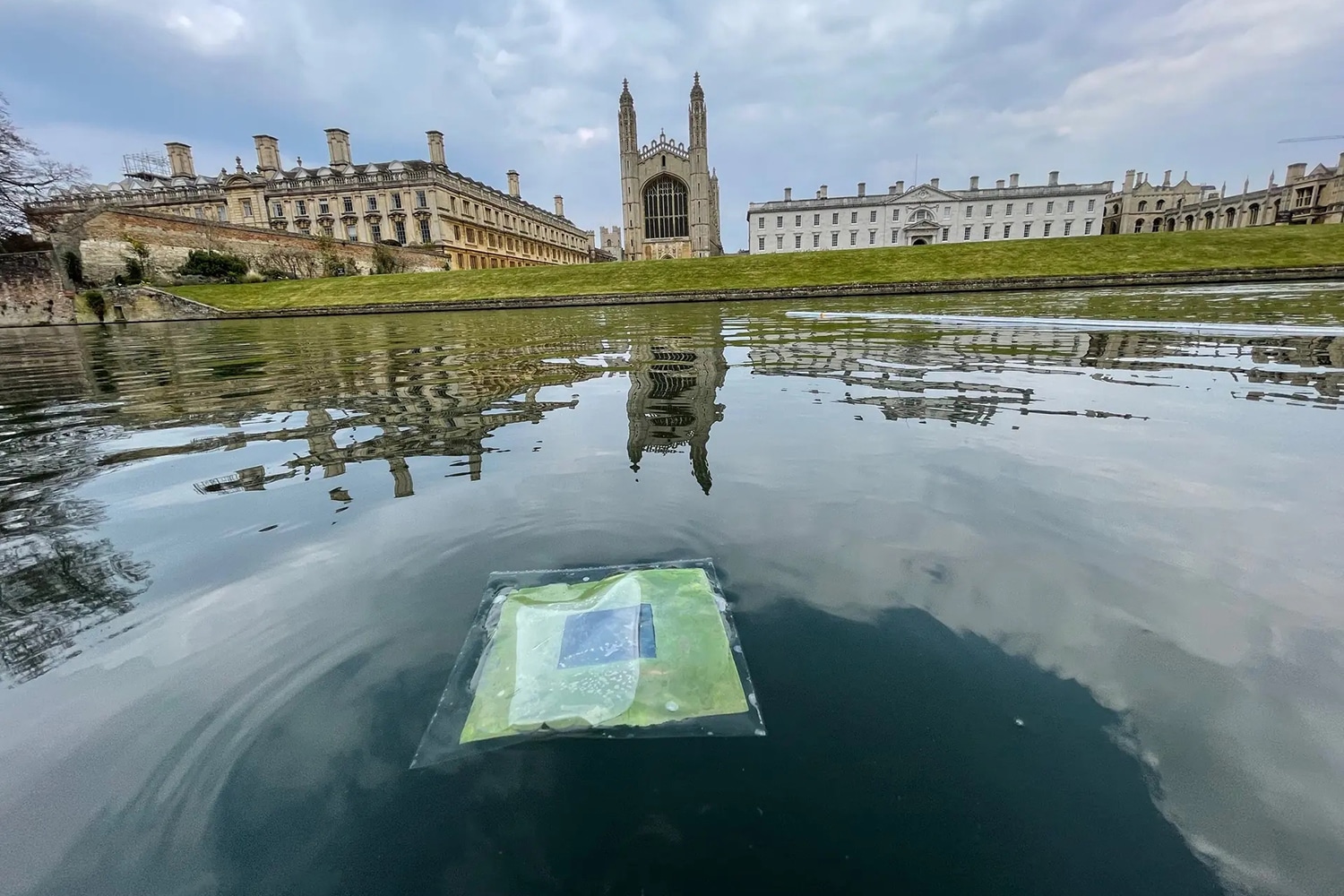
A team of researchers from the University of Cambridge has developed floating ‘artificial leaves’ that generate clean fuels from sunlight and water and could eventually operate on a large scale at sea.
These ultra-thin, flexible devices take their inspiration from photosynthesis – the process by which plants convert sunlight into food. The low-cost, autonomous devices are light enough to float; they could be used to generate a sustainable alternative to petrol without taking up space on land.
While renewable energy technologies, such as wind and solar, have become significantly cheaper and more available in recent years, for industries such as shipping, decarbonization is a much taller order. About 80% of global trade is transported by cargo vessels powered by fossil fuels, yet the sector has received remarkably little attention in discussions around the climate crisis.
For several years, a research group in Cambridge has been working to address this problem by developing sustainable solutions to petrol that are based on the principles of photosynthesis. In 2019, they developed an artificial leaf, which makes syngas, a key intermediate in the production of many chemicals and pharmaceuticals – from sunlight, carbon dioxide, and water.
The earlier prototype generated fuel by combining two light absorbers with suitable catalysts. However, it incorporated thick glass substrates and moisture-protective coatings, resulting in a bulky device.
For the new version of the artificial leaf, the researchers took their inspiration from the electronics industry. But the challenge was to deposit light absorbers onto lightweight substrates and protect them against water infiltration.
To overcome these challenges, the team used thin-film metal oxides and materials known as perovskites, which can be coated onto flexible plastic and metal foils. The devices were then covered with micrometer-thin, water-repellent carbon-based layers that prevented the devices from moisture damage. The resulting device was an artificial leaf that could float on the water’s surface.
“This study demonstrates that artificial leaves are compatible with modern fabrication techniques, representing an early step towards the automation and up-scaling of solar fuel production,” said Dr. Virgil Andrei from Cambridge’s Yusuf Hamied Department of Chemistry, the paper‘s co-lead author. “These leaves combine the advantages of most solar fuel technologies, as they achieve the low weight of powder suspensions and the high performance of wired systems.”
Tests of the new artificial leaves showed that they could split water into hydrogen and oxygen or reduce CO2 to syngas. Outdoor tests of the lightweight leaves on the River Cam showed that they could convert sunlight into fuels as efficiently as plant leaves.
Researchers say this is the first time that clean fuel has been generated on water, and if scaled up, the artificial leaves could be used on polluted waterways, in ports, or even at sea, and could help reduce the global shipping industry’s reliance on fossil fuels. While additional improvements will need to be made before they are ready for commercial applications, the researchers say this development opens whole new avenues in their work.
Floating artificial leaves generate clean fuels from sunlight and water
Source: Global Access News

No comments:
Post a Comment